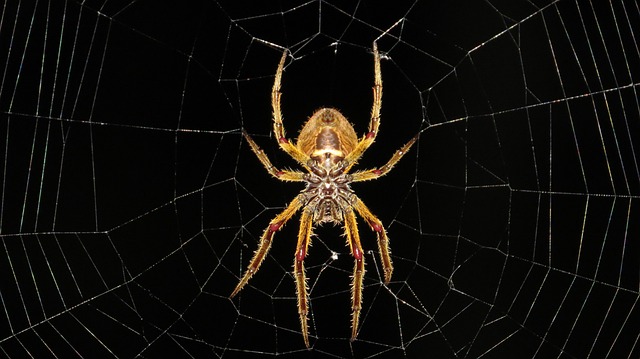Yes, some spiders have blue blood due to the copper-based respiratory pigment called Hemocyanin, which functions similarly to iron-based hemoglobin in human blood.
Spiders are incredible creatures that often capture our curiosity. With their intricate webs and unique physiology, it’s no wonder we are drawn to learn more about them.
One question that may arise is “Do spiders have blue blood?”
Similar to some other fascinating organisms, like horseshoe crabs, some spiders may have blue blood.
However, Blood color can vary significantly across different species, and spiders, with their diverse range of colors and patterns, may leave us wondering about the color of their vital life fluid.
This article will give you insights on whether spiders have blue blood and uncover the fascinating truth behind their circulatory system.
Do Spiders Have Blue Blood And Why?
Like most other animals, the spider also tends to have red blood, that’s natural. But surprisingly, there’re rumors regarding the spiders’ blood that they have blue blood.
So, do spiders have blue blood, or is it just a rumor?
Yes, some spiders do indeed have blue blood, resulting from a unique respiratory pigment called Hemocyanin. So, blue blood in spider veins isn’t completely a rumor; it’s a fact.
However, Hemocyanin contains copper and plays a similar role to hemoglobin in humans, facilitating the transportation of oxygen. When oxygenated, Hemocyanin turns blue, giving spider blood its distinct color.
Unlike iron-based hemoglobin in human blood, which is red when oxygenated, Hemocyanin becomes blue in the presence of oxygen.
This adaptation allows certain spider species and some other arthropods like certain crustaceans to transport oxygen through their bodies efficiently.
However, it’s important to note that not all spiders possess blue blood; the coloration depends on the specific respiratory pigments present in their circulatory systems.
What are the Interesting Facts about the Spiders Blue Blood?

Spiders’ blood has unique characteristics, as they hold blue blood, unlike other living creatures. Now, what are the interesting facts about the spider’s blue blood? Let’s discover.
1. The blue color of a spider’s blood is due to a copper-based respiratory pigment called Hemocyanin, which carries oxygen throughout their bodies.
2. Unlike humans and other vertebrates, spiders do not have red blood cells or iron-based hemoglobin in their circulatory system.
3. Spiders’ blue blood helps them efficiently transport oxygen to their tissues and organs, allowing them to have high metabolic rates and be active hunters.
4. Spider blood is clear or pale when inside their bodies but turns blue when exposed to oxygen, such as when they are injured, and their blood is exposed.
5. Hemocyanin is less efficient in oxygen transportation compared to hemoglobin, which is why spiders have a lower activity and metabolic rate than mammals and birds.
6. Spiders’ blue blood also helps protect against infections, as the copper in Hemocyanin has antimicrobial properties.
7. Hemocyanin is found in other arthropods as well, such as horseshoe crabs and some crustaceans.
8. Spiders have an open circulatory system, meaning their blood does not flow in closed blood vessels. Instead, it bathes their internal organs and tissues before returning to the heart (called the dorsal vessel).
9. The blue color of spider blood is not exclusive to all spider species. Some spiders have green, purple, or even yellow blood due to variations in their respiratory pigments.
10. The unique color of spider blood has made it a subject of fascination in many cultures and has inspired various myths and legends.
FAQs
Can humans use spider hemocyanin for medical purposes?
There is ongoing research into the potential medical applications of Hemocyanin, such as using it in wound healing or even cancer treatment, but it’s not yet widely used in human medicine.
What purpose does Hemocyanin serve in spiders?
Hemocyanin helps spiders transport oxygen throughout their bodies. It’s similar to how hemoglobin transports oxygen in human blood.
Do all spiders have blue blood?
No, not all spiders have blue blood. Hemocyanin is present in some spider species, but others have different respiratory pigments.
Is blue blood exclusive to spiders?
Blue blood is not exclusive to spiders. Other arthropods, like certain crustaceans, also have blue blood due to the presence of Hemocyanin.
Does blue blood affect a spider’s behavior?
Blue blood itself doesn’t significantly affect spider behavior. It primarily serves the purpose of oxygen transport in their bodies.
Can you see a spider’s blue blood?
Spider blood is usually not visible unless the spider is injured or its exoskeleton is damaged, allowing the blue color to show through.
Is blue blood an indicator of a spider’s health?
Blue blood color isn’t necessarily an indicator of a spider’s health. Other factors like appearance, movement, and behavior are better indicators.
Does the color of spider blood change?
The color of spider blood can change depending on its oxygenation level. When oxygenated, it’s blue; when deoxygenated, it turns colorless or pale.
Can humans use spider hemocyanin for medical purposes?
There is ongoing research into the potential medical applications of Hemocyanin, such as using it in wound healing or even cancer treatment, but it’s not yet widely used in human medicine.
Conclusion
The spiders’ respiratory system showcases the uniqueness and complexity of these intriguing creatures. According to their unique physical structure, they contain a completely different blood color.
Not all spiders have blue blood, but some spiders contain blue blood in their body. It’s called Hemocyanin, which binds with oxygen, turns a bluish color, and gives appearance to the blue blood.

